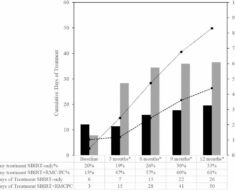
THURSDAY, Jan. 17, 2019 — Community-dwelling older adults frequently have co-occurring symptoms, according to a study published online recently in the Journal of the American Geriatrics Society.
Kushang V. Patel, Ph.D., M.P.H., from the University of Washington in Seattle, and colleagues examined the prevalence and impact of common co-occurring symptoms among 7,609 community-dwelling older adults (aged 65 years or older) using data from the National Health and Aging Trends Study with annual data collection between 2011 and 2017. Symptoms of pain, fatigue, breathing difficulty, sleeping difficulty, depressed mood, and anxiety were assessed at baseline.
The researchers found that 25.0, 26.6, 20.7, 14.0, and 13.6 percent of participants reported zero, one, two, three, and four or more symptoms, respectively. With advancing age, there was an increase in symptom count; symptom count was higher in women than men. The most common co-occurring symptoms were pain and fatigue. There was a correlation for higher symptom count with decreased physical capacity; compared with those with no symptoms, participants with one, two, three, and four or more symptoms had gait speeds that were 0.04, 0.06, 0.09, and 0.13 m/s slower, respectively, after adjustment for confounders, including specific diseases and total number of diseases. Greater symptom count also correlated with an increased risk for several adverse outcomes.
“In light of the current study, further multidisciplinary research on symptoms is needed to ultimately develop effective symptom management interventions,” the authors write.
Abstract/Full Text

Posted: January 2019
Source: Read Full Article





